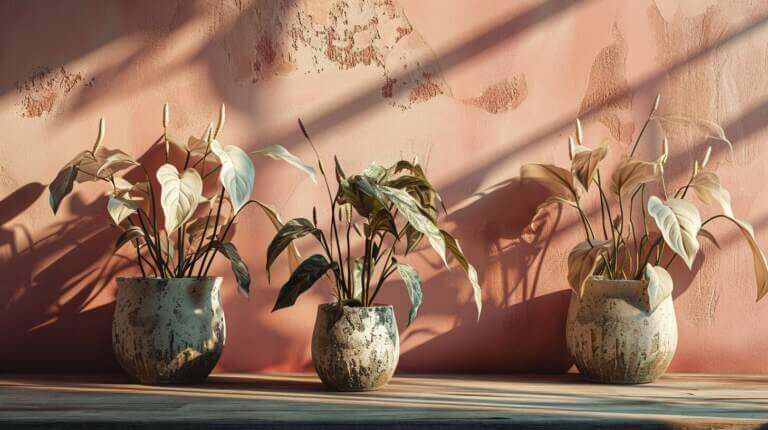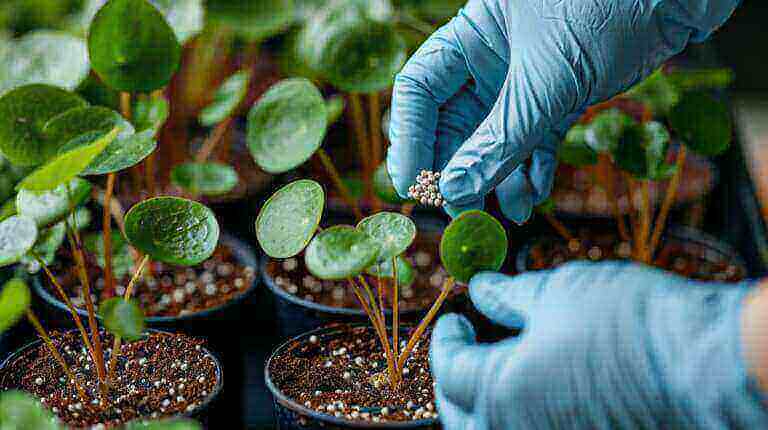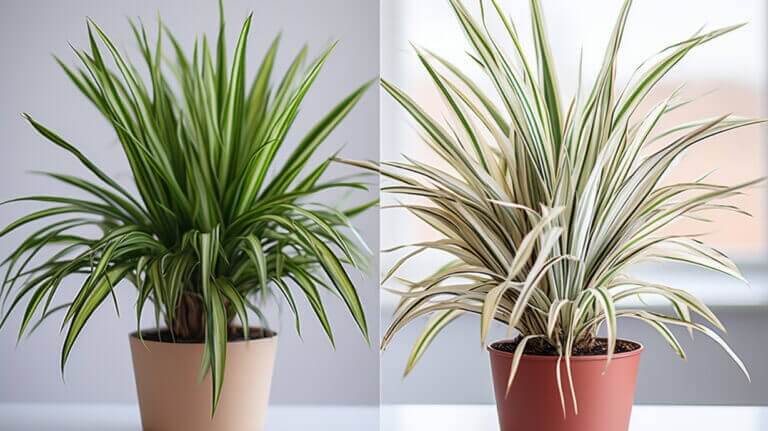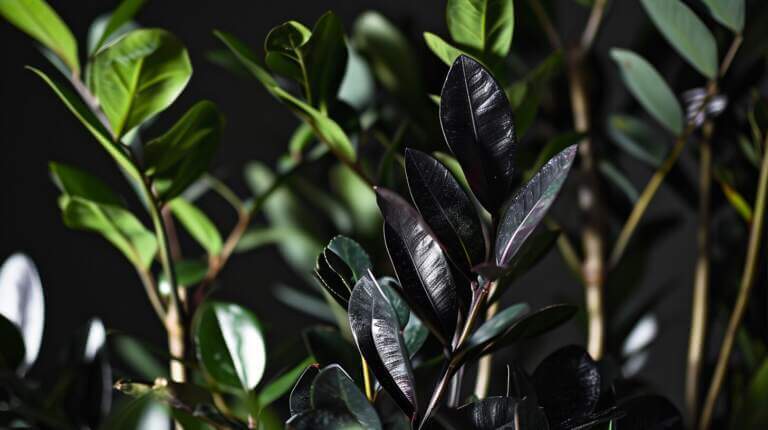Growing Stunning Variegated Cast Iron Plant(Aspidistra Elatior) Varieties Indoors
The cast-iron plant (Aspidistra elatior) is an easy-to-care-for houseplant that is known for its stunning variegated foliage. It is a hardy plant that can tolerate neglect and a range of growing conditions. The glossy, arching leaves of the cast-iron plant can reach up to 2 feet long and 4 inches wide, and they come in a variety of variegated patterns, including cream and white stripes. This plant is perfect for low-light conditions and can tolerate a wide range of indoor temperatures. It is also resistant to pests and diseases, making it a great choice for beginners. To care for a variegated cast-iron plant indoors, you will need to provide it with well-draining soil, indirect light, and regular watering. It is important to avoid overwatering or placing the plant in direct sunlight, as this can lead to root rot or leaf scorch. Pruning and repotting may be necessary as the plant grows, and fertilizing can help promote healthy growth. With proper care, you can enjoy the beauty of variegated cast-iron plants indoors and create a stunning indoor oasis.
Key Takeaways:
- Growing variegated cast-iron plants indoors is easy and rewarding.
- Variegated cast-iron plants are hardy and can tolerate a range of growing conditions.
- Provide well-draining soil, indirect light, and regular watering for optimal care.
- Avoid overwatering and placing the plant in direct sunlight to prevent root rot and leaf scorch.
- Pruning, repotting, and fertilizing can help promote healthy growth.
How to Plant and Care for Variegated Cast Iron Plants Indoors
To successfully plant and care for variegated cast-iron plants indoors, start by choosing a suitable location for your plant. Variegated cast-iron plants prefer indirect light and can thrive in a north-facing window or in a shaded area with indirect sunlight. It is important to use well-draining soil and ensure that the pot has drainage holes to prevent waterlogging and root rot.
Watering should be done moderately, allowing the soil to dry out slightly between waterings. Temperature-wise, variegated cast-iron plants prefer temperatures between 60 and 75 degrees Fahrenheit, and they can tolerate moderate humidity levels. Fertilizing should be done sparingly during the growing season, using a balanced liquid fertilizer.
Pruning and repotting may be necessary as the plant grows, and pest control measures may need to be taken to prevent infestations. Variegated cast-iron plants can be propagated through division, which involves separating the plant into smaller sections and replanting them in fresh soil. With proper care and attention, variegated cast-iron plants can thrive indoors and add a touch of beauty to any space.
Table: Summary of Plant Care Guidelines
| Care Aspect | Guidelines |
|---|---|
| Light | Indirect light or north-facing window |
| Soil | Well-draining soil with drainage holes |
| Watering | Moderate watering, allowing soil to slightly dry out between waterings |
| Temperature | 60-75 degrees Fahrenheit |
| Humidity | Moderate humidity levels |
| Fertilizing | Sparingly during the growing season with balanced liquid fertilizer |
| Pruning | As needed for plant growth |
| Pest Control | Take necessary measures to prevent infestations |
| Propagation | Divide plant and replant in fresh soil |
Common Issues and Troubleshooting for Variegated Cast Iron Plants
Aspidistra elatior, commonly known as the cast iron plant, is a popular houseplant known for its hardiness and stunning variegated foliage. However, like any plant, it can encounter some common issues. One common problem is browning of the leaves, which can be caused by overwatering, underwatering, or excessive sunlight exposure. To address this, I recommend monitoring the plant’s water needs and adjusting the watering schedule accordingly. If the browning persists, consider moving the plant to a location with less direct sunlight.
Another common issue for variegated cast iron plants is pest infestation, particularly by spider mites. These tiny pests can suck the plant’s sap and cause damage to the leaves. To combat spider mites, I suggest using insecticidal soap or neem oil. Regularly inspect the plant for any signs of infestation and take immediate action to prevent the spread of these pests.
Poor drainage and overwatering can lead to rot or root rot, which can severely affect the health of your variegated cast iron plant. To prevent these problems, ensure that your plant is potted in well-draining soil and use a pot with drainage holes. Be mindful of the plant’s water requirements and avoid overwatering. Additionally, be cautious with potting mixes that retain too much moisture, as this can exacerbate the risk of root-related issues.
Lastly, variegated cast iron plants may experience leaf problems such as scorching or discoloration. This can be caused by factors such as excessively high temperatures, low humidity levels, or exposure to drafts. To address these issues, maintain a suitable temperature and humidity range for your plant, and ensure it is placed in an area with adequate air circulation. If leaf problems persist, consider repotting the plant using fresh potting soil and inspect for any signs of diseases or pests.
FAQ
What is a variegated cast-iron plant?
A variegated cast-iron plant (Aspidistra elatior) is a houseplant known for its stunning variegated foliage.
What are the growing conditions for a variegated cast-iron plant?
Variegated cast-iron plants are perfect for low-light conditions and can tolerate a wide range of indoor temperatures.
What is Aspidistra Elatior?
Aspidistra Elatior, also known as the cast iron plant, is a popular indoor plant known for its dark green, glossy leaves. It’s a hardy plant that’s easy to care for, making it a favorite among house plant enthusiasts.
How do I care for a cast iron plant?
Cast iron plant care involves placing the plant in low light conditions as it’s tolerant of darker environments. Water the plant when the top inch of soil is dry and ensure it’s planted in a pot with good drainage to prevent waterlogging.
What types of cast iron plants can I grow?
There are several types of cast iron plants you can grow, including variegated varieties that have unique patterns on their leaves. The best cast iron plant for you will depend on your specific care preferences and the conditions in your home.
How do I propagate a cast iron plant?
To propagate a cast iron plant, you can divide the plant at the base during repotting. Each division should have a piece of the root system to grow a new plant.
What common problems should I look out for when growing cast iron plants?
Common plant problems when growing cast iron plants include yellowing leaves (often due to overwatering) and slow growth. If you’re growing a variegated variety, it may lose its variegation if it’s not getting enough light.
How often should I fertilize my cast iron plant?
Fertilize your cast iron plant during the growing season (spring and summer) with a balanced houseplant fertilizer. Follow the instructions on the fertilizer package to avoid over-fertilizing, which can lead to plant problems.
What are the different varieties of cast iron plants?
There are several varieties of cast iron plants, including the common Aspidistra Elatior and various variegated varieties. Each variety has its own unique care requirements and aesthetic appeal.
What are some tips for growing and caring for cast iron plants?
When growing and caring for cast iron plants, remember to place this plant in low light conditions, avoid overwatering, and fertilize during the growing season. With the right care, your cast iron plant can thrive and become a stunning addition to your indoor plant collection.







